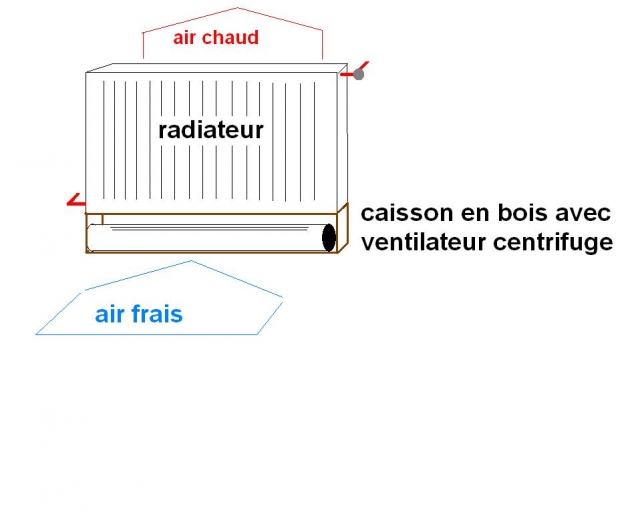Improved radiator central heating
published: 27/12/10, 16:01
Hello
Recently I renovated the interior of my house, insulation, decoration, and drop some partitions to make me a living room of 50m².
Now I have a nice living space with open kitchen but there is a big temperature difference between this room and the other rooms of the house.
Indeed I made a small calculation on a simulator and I see that it takes no less than 6500W to heat this room while I have 4500W radiators.
There is 50m² on the ground, 2,35m under ceiling, 4 walls giving on the outside, two windows, two doors windows, two doors of entries and a soil on crawl space (50cm approximately).
This lack of power generates overconsumption of gas because it takes much longer to reach 19 ° C, as in rooms or the bathroom for example.
I compensate the overconsumption by installing the wireless thermostat in one of the rooms, but in this case the temperature drops to 16 ° C or 17 ° C in the living room despite the good insulation of the walls.
I can replace only one radiator (1700w) by a radiator more powerful (3500w) but it is overpriced.
I had the idea to turn this radiator fan coil to improve its performance by adding a centrifugal fan.
Do you think it can work?
I already bought a column fan that I put under the radiator.
If it works I intend to do the same on the other radiators in this room by making a small wooden box with the integrated fan.

Recently I renovated the interior of my house, insulation, decoration, and drop some partitions to make me a living room of 50m².
Now I have a nice living space with open kitchen but there is a big temperature difference between this room and the other rooms of the house.
Indeed I made a small calculation on a simulator and I see that it takes no less than 6500W to heat this room while I have 4500W radiators.
There is 50m² on the ground, 2,35m under ceiling, 4 walls giving on the outside, two windows, two doors windows, two doors of entries and a soil on crawl space (50cm approximately).
This lack of power generates overconsumption of gas because it takes much longer to reach 19 ° C, as in rooms or the bathroom for example.
I compensate the overconsumption by installing the wireless thermostat in one of the rooms, but in this case the temperature drops to 16 ° C or 17 ° C in the living room despite the good insulation of the walls.
I can replace only one radiator (1700w) by a radiator more powerful (3500w) but it is overpriced.
I had the idea to turn this radiator fan coil to improve its performance by adding a centrifugal fan.
Do you think it can work?
I already bought a column fan that I put under the radiator.
If it works I intend to do the same on the other radiators in this room by making a small wooden box with the integrated fan.